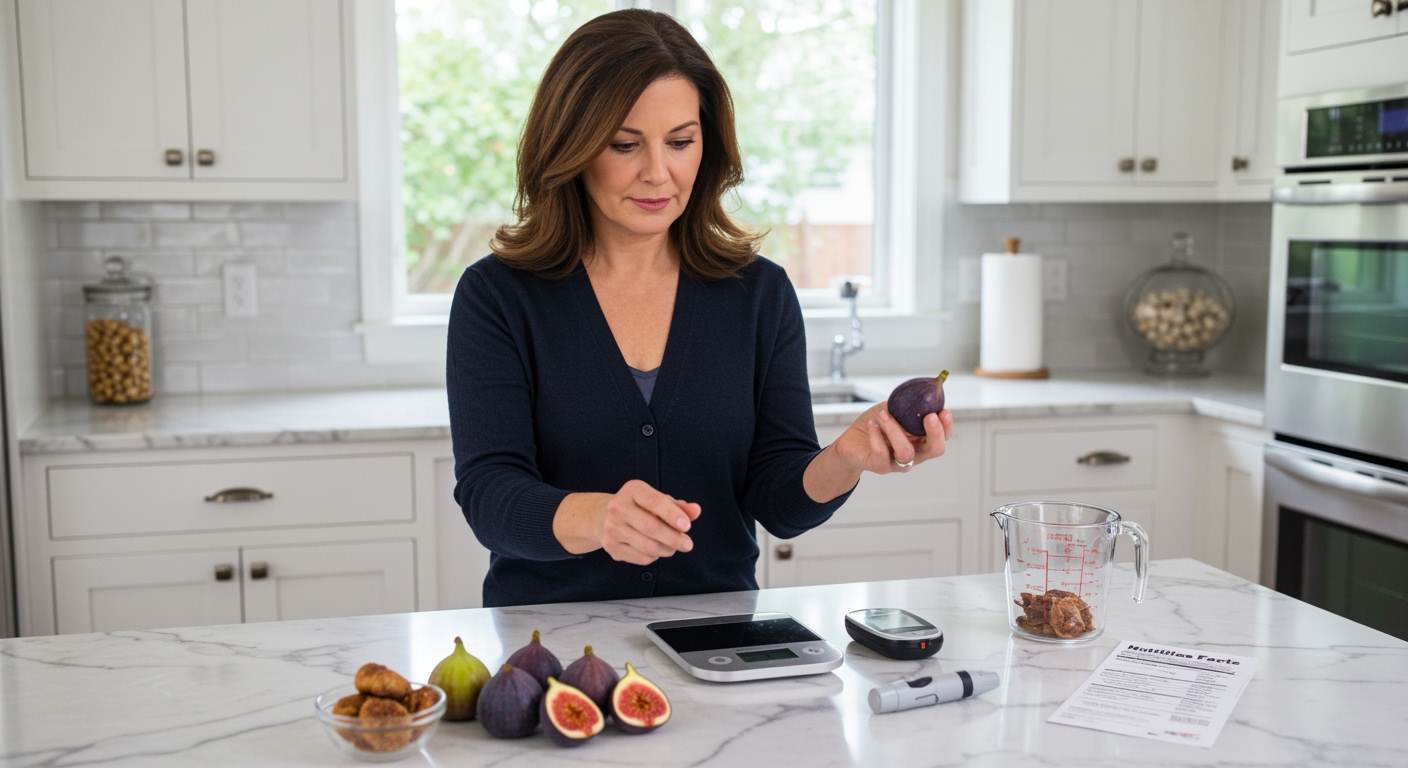✪ Key Takeaway: Figs can be part of a diabetic diet when eaten in moderation due to their fiber content and moderate glycemic index.
Introduction
You bite into a fresh fig and taste pure sweetness that makes you wonder if this fruit is sabotaging your blood sugar control.
Many people with diabetes avoid figs completely because they assume all sweet fruits will cause dangerous blood sugar spikes.
Hi, I’m Abdur, your nutrition coach and today I’m going to explain whether figs are truly problematic for diabetes or if you can safely include them in your meal plan.
What Makes Figs Different From Other Sweet Fruits?
Figs contain a unique combination of natural sugars and soluble fiber that affects blood glucose differently than many other fruits.
One medium fresh fig contains about 8 grams of sugar but also provides 1.5 grams of fiber.
The fiber content in figs slows down sugar absorption in your digestive system.
This means your blood sugar rises more gradually instead of spiking rapidly like it would with processed sweets.
Fresh figs have a glycemic index of around 35, which places them in the low to moderate range.
The glycemic index measures how quickly foods raise blood sugar on a scale of 0 to 100.
Foods with a glycemic index below 55 are considered diabetes-friendly when consumed in appropriate portions.
✪ Fact: Fresh figs contain more fiber per serving than many common fruits like grapes or watermelon.
How Do Figs Affect Blood Sugar Levels?
Your body processes the sugars in figs more slowly than refined sugar because of the fruit’s fiber matrix.
When you eat a fig, the fiber forms a gel-like substance in your stomach that slows digestion.
This process helps prevent the rapid blood sugar spikes that can be dangerous for people with diabetes.
Research shows that fig leaf extract may actually help improve insulin sensitivity in some people.
The antioxidants in figs, particularly anthocyanins, may help your cells respond better to insulin.
However, dried figs have a much higher sugar concentration than fresh ones because the water has been removed.
A single dried fig contains about the same amount of sugar as a fresh fig but in a much smaller package, making it easier to overconsume.
✪ Pro Tip: Always choose fresh figs over dried ones to better control your blood sugar response.
What Is The Right Portion Size For Diabetics?
Portion control becomes crucial when including figs in a diabetic meal plan.
One to two medium fresh figs typically represents an appropriate serving size for most people with diabetes.
This portion provides about 15-20 grams of carbohydrates, which fits within standard diabetic exchange guidelines.
The key is to account for these carbohydrates in your total daily intake and pair figs with protein or healthy fats.
Eating figs alongside nuts, Greek yogurt, or cheese can further slow sugar absorption.
Never eat figs on an empty stomach if you have diabetes because this can cause a more pronounced blood sugar rise.
Instead, include them as part of a balanced meal or snack that contains other macronutrients.
✪ Note: Monitor your blood sugar 2 hours after eating figs to understand your personal response.
When Should Diabetics Avoid Figs?
Certain situations make figs inappropriate for people with diabetes.
If your blood sugar is already elevated above 180 mg/dL, adding any fruit including figs will make the situation worse.
People with poorly controlled diabetes should focus on stabilizing their blood sugar before introducing higher-sugar fruits.
Those taking certain diabetes medications that increase insulin production should be extra cautious with fruit timing.
Eating figs during peak medication action could potentially cause hypoglycemia in some individuals.
If you experience frequent blood sugar swings or have difficulty managing your levels, work with your healthcare provider before adding figs to your diet.
Some people with diabetes may have individual food sensitivities that cause unexpected blood sugar responses to certain fruits.
✪ Pro Tip: Keep a food diary to track how different fruits affect your personal blood sugar patterns.
The Bottom Line
Figs can be safely included in a diabetic diet when consumed in appropriate portions and as part of balanced meals.
The key to diabetes management is not avoiding all sweet foods but learning to enjoy them wisely within your overall carbohydrate budget.
I would love to hear about your experiences with figs and diabetes management, so please share your thoughts or questions in the comments below.
References
At NutritionCrown, we use quality and credible sources to ensure our content is accurate and trustworthy. Below are the sources referenced in creating this article:
- PMC: Fig Extract Benefits for Diabetic Treatment
- January AI: Fig Glycemic Index
- Cleveland Clinic: Benefits of Figs
- Signos: Fig Glycemic Index Guide





